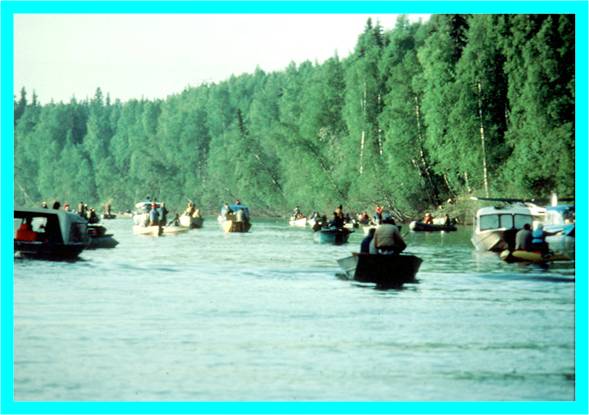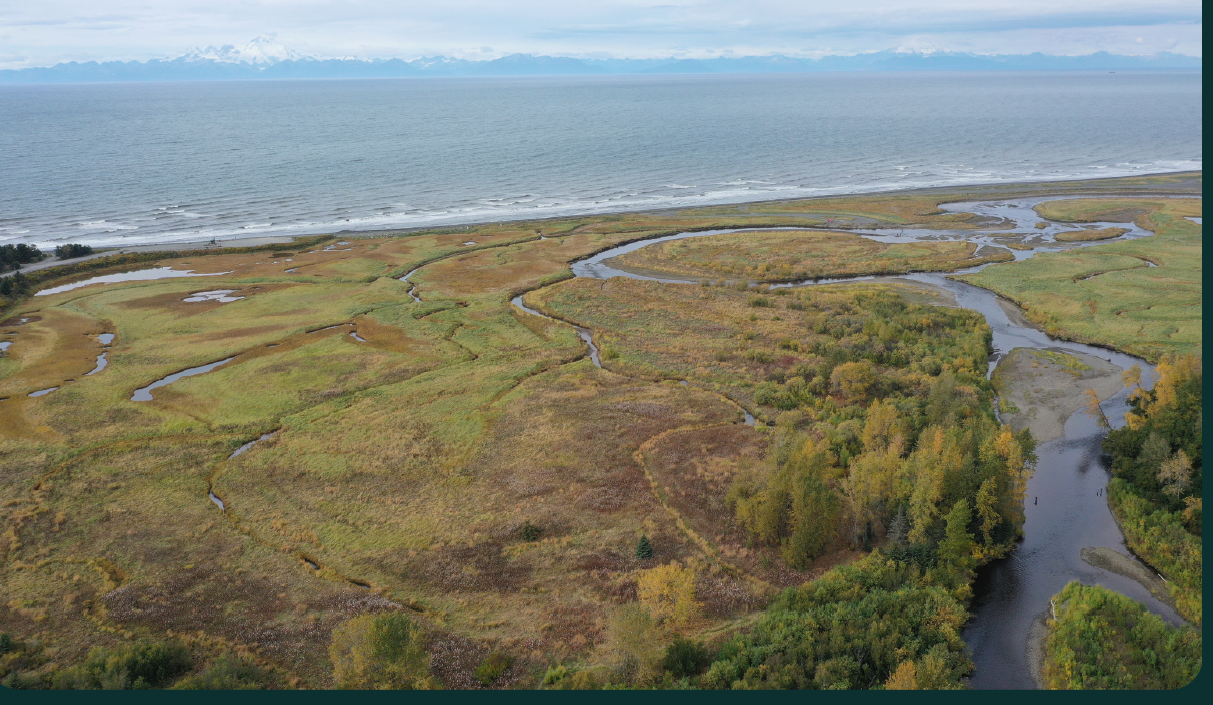Approximately 50 air miles northwest of Anchorage, Alexander Creek Watershed is a remote and slow moving meandering river system with numerous tributaries and shallow lakes and ponds.
 In the late 1990s Alexander Watershed was highly productive Chinook and coho salmon habitat, and arguably the premier Chinook sport fishing area in all of Southcentral Alaska. It supported what was likely a multi-million dollar salmon fishery with lodges, daily flight service and boat charters. Today however, due to low returns, Alexander drainage is closed to Chinook harvest, and is a fraction the economic driver it once was. Fishermen today are motivated to travel to the remote lake to catch invasive northern pike, rather than salmon.
In the late 1990s Alexander Watershed was highly productive Chinook and coho salmon habitat, and arguably the premier Chinook sport fishing area in all of Southcentral Alaska. It supported what was likely a multi-million dollar salmon fishery with lodges, daily flight service and boat charters. Today however, due to low returns, Alexander drainage is closed to Chinook harvest, and is a fraction the economic driver it once was. Fishermen today are motivated to travel to the remote lake to catch invasive northern pike, rather than salmon.
Pike – see what partners are doing about pike
While northern pike (Esox lucius) are native north and west of the Alaska Range in interior Alaska, they are an introduced species to the Mat-Su Basin (thought to have been introduced illegally in the early 1960s), where they are voracious predators of juvenile salmon and other native resident fish and wildlife. Impacts of invasive northern pike predation on native fish populations are known to be devastating where their habitats overlap. Northern pike prefer cool, slow moving shallow waters that are highly vegetated, enabling them to hide and ambush prey. The potential threat of northern pike is greatest for Chinook and Coho salmon due to a preference for similar habitats. To date, pike have expanded throughout the entirety of the Alexander drainage resulting in native fish populations that contribute to eroding subsistence, commercial and particularly sport fishing opportunities. Northern pike have direct impacts on salmon populations, and indirect economic impacts on ecosystem health through decreasing biodiversity, removing salmon as a food source for terrestrial predators like bears and eagles, and reducing transfer of marine-derived nutrients to terrestrial ecosystems through decaying salmon carcasses.
Elodea – see what partners are doing about Elodea
Compounding the situation, in August of 2014, aquatic invasive plant Elodea was discovered for the first time in Mat-Su waters by Alaska Department of Fish and Game crews suppressing and monitoring northern pike. The relatively small, patchy 10 acre infestation in Alexander Lake is thought to have established from a transported fragment via floatplane from Sand Lake; the only Anchorage infestation that allows floatplane traffic. Of the 19 total waterbodies with Elodea discovered in the entire state of Alaska, Alexander is one of the few recent discoveries in a remote location.
When introduced to a new waterway, Elodea grows rapidly, overtaking native plants, filling the water column, and changing the habitat conditions to which native fish are adapted. Thick mats form at or just below the water surface and can foul boat propellers and floatplane rudders, causing a hazard. In addition to impeding fishing, navigation, boat launching, and paddling, it can also reduce waterfront property values. In Alaska’s environments ranging from Fairbanks to Cordova, it tolerates cold winters and photosynthesizes under ice. Should Elodea become established in Alexander Creek and Lake habitat, it would provide excellent habitat quality for predatory northern pike, further exacerbating the existing impacts of pike predation on juvenile salmon and other fish.
Compounding Effect
With the recent discovery of Elodea, there is concern of compounded effects of pike and Elodea on salmon that if left to expand will not only reduce gains made in reducing pike populations by partners, but increase the challenges already faced by Chinook salmon populations returning in lower numbers to the Susitna drainage. This is particularly significant during a time of general statewide Chinook declines, where 8 of the 14 statewide stocks of concern are located in the Mat-Su. 8 of these stocks – one of them being Alexander Creek, are Chinook stocks from the Susitna drainage, and 1 is sockeye stock.
The greatest threats to salmon and salmon habitat in the Mat-Su are typically due to human development impacts. Invasive aquatic species like Elodea and pike pose a threat to remote areas as well. With concurrent, Chinook salmon declines across the state, Alexander Creek drainage and the excellent salmon habitat it provides is increasingly important.


